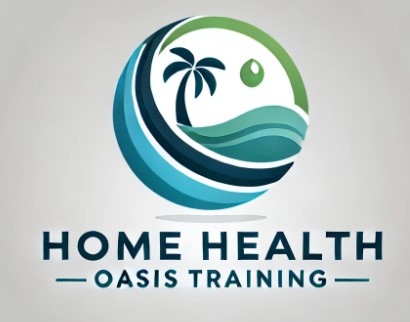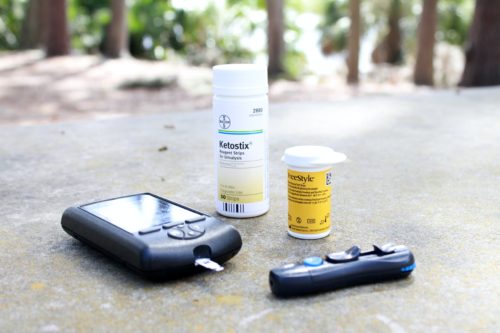Nurse Teachings on Wound Care: Expert Tips and Techniques
Are you a nurse looking to enhance your knowledge and skills in wound care? Look no further! In this ultimate guide, we will provide you with expert tips and techniques to become a master in nursing teachings on wound care. Whether you are a seasoned nurse or just starting your career, this comprehensive guide will equip you with the essential knowledge to excel in this critical aspect of patient care.
Throughout this article, we will cover a wide range of topics, including the different types of wounds, wound assessment and documentation, the importance of proper wound cleansing, and the latest advancements in wound dressing techniques. Our team of experienced nurses and wound care specialists have crafted this guide to address common challenges faced in wound care and provide practical solutions and evidence-based practices that you can implement in your daily practice.
With our step-by-step instructions, insightful tips, and real-life case studies, you will gain the confidence and expertise needed to provide optimal wound care to your patients. It’s time to take your nursing teachings on wound care to the next level. Let’s begin this journey together!
Importance of Proper Wound Care Techniques
Effective wound care is a cornerstone of nursing practice that significantly impacts patient outcomes. Proper wound management techniques not only promote healing but also prevent complications such as infections, delayed healing, and chronic wounds. Inadequate care can lead to severe consequences, including increased patient morbidity and extended hospital stays. This highlights the necessity for nurses to be well-versed in the latest evidence-based practices for wound care.
Understanding the principles of wound healing is essential for nurses to provide high-quality care. Each wound type requires a specific approach, influenced by factors such as the wound’s depth, location, and underlying health conditions of the patient. Utilizing appropriate techniques helps in minimizing tissue damage and supporting the natural healing process. When nurses are equipped with this knowledge, they can make informed decisions that enhance patient comfort and promote faster recovery.
Furthermore, the psychological aspect of wound care must not be overlooked. Patients often experience anxiety and distress related to their wounds, especially if they are chronic or complex. Proper wound care techniques, combined with effective communication and patient education, can alleviate fears. By fostering a therapeutic nurse-patient relationship, nurses can encourage adherence to treatment plans, leading to better outcomes.
Understanding Different Types of Wounds
Wounds can be classified into several categories, each presenting unique characteristics and healing challenges. The primary types of wounds include acute, chronic, surgical, traumatic, and pressure ulcers. Acute wounds, such as cuts or abrasions, typically heal within a predictable time frame and are often a result of a specific injury. Chronic wounds, on the other hand, do not follow the normal healing process, often due to underlying health conditions like diabetes or vascular disease.
Surgical wounds arise post-operatively and can involve various layers of tissue, depending on the procedure performed. Traumatic wounds result from accidents or injuries and may range from minor lacerations to severe punctures. Understanding these distinctions is crucial for nurses as it guides treatment decisions and helps anticipate potential complications during the healing process.
Pressure ulcers, also known as bedsores, warrant special attention due to their prevalence in immobile patients. They develop from prolonged pressure on the skin, often over bony areas, and can lead to severe infections if not managed properly. Recognizing the risk factors and early signs of pressure ulcers is essential for preventative care. By being knowledgeable about different wound types, nurses can tailor their interventions effectively to meet the specific needs of each patient.
Assessing and Documenting Wounds
Comprehensive wound assessment is vital for developing an effective care plan. A thorough evaluation includes measuring the wound size, depth, and assessing the surrounding skin condition. Observing the wound’s appearance—such as color, presence of necrotic tissue, and exudate characteristics—provides critical information about the healing process. It is essential for nurses to use a standardized assessment tool to ensure consistency and accuracy in their evaluations.
Proper documentation of wound assessments is equally important. Accurate records facilitate communication among healthcare providers and help track the healing progress over time. Documentation should include detailed descriptions of the wound, interventions implemented, and the patient’s response to treatment. Additionally, documenting any changes in the wound’s condition allows for timely adjustments to the care plan, ensuring that the patient receives the most effective treatment.
Incorporating patient input into the assessment process can further enhance care. Engaging patients in discussions about their wounds can provide insights into pain levels, concerns, and healing expectations. By integrating subjective data from the patient with objective assessments, nurses can develop a holistic view of the wound and tailor interventions that align with the patient’s preferences and needs, ultimately leading to better outcomes.
Cleansing and Dressing Wounds Effectively
Cleansing wounds properly is a fundamental step in wound care that helps remove debris, bacteria, and necrotic tissue, thus promoting healing. The choice of cleansing solution is critical; saline is often preferred due to its isotonic nature, reducing the risk of cellular damage. Nurses must also consider the pressure applied during cleansing. Gentle irrigation techniques can effectively cleanse the wound without causing trauma to the surrounding tissue.
Selecting the appropriate dressing for each wound type is equally important. Dressings serve multiple functions, including protection from infection, moisture retention, and aiding in the natural healing process. Different types of dressings, such as hydrocolloids, foams, and alginates, have specific properties that make them suitable for various wound conditions. For instance, hydrogels are excellent for dry wounds, while alginate dressings are ideal for wounds with moderate to heavy exudate.
Regular dressing changes are essential to prevent infection and promote healing. The frequency of changes depends on the wound’s condition and the type of dressing used. Nurses should educate patients about signs of infection and when to seek medical attention. Involving patients in their care by teaching them how to change their dressings can enhance adherence and empower them in their healing journey.
Managing Wound Pain and Discomfort
Wound pain management is a crucial aspect of wound care that significantly affects a patient’s quality of life. Effective pain control not only alleviates discomfort but also promotes healing by reducing stress and improving patient engagement in care. Assessing pain levels should be an ongoing process, utilizing standardized pain scales to ensure accurate measurement and documentation.
Pharmacological interventions, such as analgesics, can be effective for managing wound pain. Nurses must assess the patient’s pain history and tailor medication regimens accordingly. Non-pharmacological methods, such as distraction techniques, relaxation exercises, and proper positioning, can also play a vital role in pain management. Educating patients about these strategies empowers them to take an active role in their pain management.
Furthermore, addressing the emotional aspects of pain is essential. Patients often experience anxiety and fear related to their wounds, which can exacerbate their pain perception. Providing a supportive environment and encouraging open communication about their concerns can help alleviate emotional distress. By incorporating a holistic approach to pain management, nurses can enhance the overall patient experience and promote effective healing.
Prevention and Management of Wound Infections
The prevention and management of wound infections is a critical component of effective wound care. Infections can significantly delay healing and may lead to serious complications, including sepsis. To prevent infections, nurses should implement strict aseptic techniques during wound care procedures. This includes thorough hand hygiene, proper use of gloves, and ensuring that all materials used are sterile.
Identifying early signs of infection is crucial for prompt intervention. Symptoms such as increased pain, redness, swelling, and purulent drainage should be assessed regularly. Nurses should educate patients on recognizing these signs and when to seek medical attention. Early detection allows for timely treatment, often preventing the need for more invasive interventions or hospitalization.
In cases where infection is suspected, appropriate cultures should be obtained to identify the causative organism. Antibiotic therapy may be necessary, and nurses play a vital role in monitoring the patient’s response to treatment. Additionally, educating patients on the importance of maintaining a clean and dry environment around the wound can further reduce the risk of infection. By taking a proactive approach, nurses can significantly enhance patient outcomes in wound care.
Advanced Wound Care Techniques and Technologies
The field of wound care is continuously evolving, with advancements in techniques and technologies that enhance healing. Negative pressure wound therapy (NPWT) is one such technique that has gained popularity in managing complex wounds. This method involves applying a vacuum through a sealed dressing, promoting blood flow to the area and removing excess fluid, which can accelerate healing and reduce infection rates.
Biologically engineered dressings have also emerged as a revolutionary option in wound care. These dressings often contain growth factors, antimicrobial agents, or living cells that promote tissue regeneration and healing. For instance, bioengineered skin substitutes can be particularly beneficial for patients with chronic wounds, providing a scaffold for new tissue formation.
Additionally, telehealth technologies are transforming wound care management by allowing for remote monitoring and consultation. Nurses can utilize digital platforms to assess wound conditions, provide patient education, and communicate with interdisciplinary teams. This approach not only enhances accessibility to care but also allows for timely interventions based on real-time data. By staying abreast of these advancements, nurses can implement innovative solutions that improve wound care outcomes.
Collaborating with Interdisciplinary Healthcare Teams for Optimal Wound Care
Collaboration among healthcare professionals is essential for delivering comprehensive wound care. Nurses often serve as the primary point of contact for patients, making them integral to the interdisciplinary team. Effective communication among team members—including physicians, dietitians, physical therapists, and wound care specialists—ensures that all aspects of patient care are addressed.
Regular interdisciplinary meetings can facilitate information sharing and collective decision-making regarding wound management strategies. Each team member brings unique expertise to the table; for instance, dietitians can assess nutritional needs that support healing, while physical therapists can address mobility issues that may affect wound care. By working together, the team can create a cohesive care plan that optimizes healing outcomes.
Moreover, involving patients and their families in the care process is vital. Educating them about the importance of interdisciplinary collaboration fosters a supportive environment and encourages adherence to treatment plans. By recognizing the value of teamwork, nurses can enhance the effectiveness of wound care and ensure that patients receive holistic support throughout their healing journey.
Conclusion and Ongoing Professional Development in Wound Care Education for Nurses
In conclusion, mastering wound care is an essential competence for nurses that requires continuous learning and adaptation. As the healthcare landscape evolves, staying updated with the latest research, techniques, and technologies is crucial. Ongoing professional development opportunities, such as workshops, certifications, and online courses, can help nurses enhance their skills and knowledge in this critical area.
Participating in professional organizations focused on wound care can also provide valuable resources and networking opportunities. Sharing experiences and learning from peers can foster a culture of excellence in wound management within healthcare settings. By engaging in lifelong learning, nurses can ensure that they remain proficient and confident in their wound care practices.
Ultimately, effective wound care is a combination of knowledge, skills, and compassionate patient interactions. By prioritizing education and collaboration, nurses can significantly impact the healing journey of their patients. Empowering themselves with the right tools and information will enable nurses to provide optimal care and improve patient outcomes in wound management.
Editor's Pick
Leave A Comment
Related Posts
Transition from OASIS-E to OASIS-E1: Key Changes and Implications for […]
Importance of Clinical Narrative and Nurse Teachings while Documenting Home Health OASIS Assessments
Importance of Clinical Narrative and Nurse Teachings while Documenting Home […]
Navigating the Complexities of Medicare and Medicaid Reimbursement for Home […]
Engaging Your Team Around the IPR: Turning Data into Motivation […]
Engaging Your Team Around the IPR: Turning Data into Motivation […]

